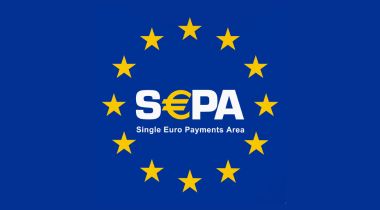Since the coronavirus pandemic, the way people pay has changed drastically. Cash and cheques, while already declining in popularity, were quickly replaced by card and online transactions as more and more people made the switch to digital payments – and it looks to be a trend that will continue.
Unprepared for digitisation to occur so quickly, a large number of B2C businesses have been impacted by this sudden change in consumer buying behaviour. With the adoption of electronic payments looking to continue to increase, B2B businesses should also review the payment methods they accept and explore what options are available. The B2B payments ecosystem is filled with pain points, inefficiencies, high costs, and limited capabilities, and so it is important to evaluate the different types of B2B payments, and weigh up the pros and cons of each.
Types of B2B payments
Cash
Cash is one of the most inefficient ways to make B2B payments, particularly with so many banks closing branches. In the last decade, banks have got a lot faster at clearing cash deposits, but they do still charge a fee for cash handling. And that’s on top of having to pay for a business bank account. This means a significant amount of money is being lost on every single deposit made.
Visibility on cash transactions is more difficult due to the fact that it is still tied to manual and paper-based tracking. Cash payments add complexity around reconciliation for receipts, purchase orders, goods received notes, bank accounts, and accounts payable and receivable.
In terms of the pros, cash is more accessible than some other payment methods, and remains a crucial part of the wider economy in developing countries.
Pros: Accessible, fast settlement times
Cons: High cost due to bank charges, lack of visibility, manual processing, only suitable in local jurisdictions, potential to be lost/intercepted in transit
Cheque
Although viewed by many as an outdated payment type, cheques remain popular in B2B. In some markets like the US, paper cheques are still commonplace, with tens of billions circulating in the global financial ecosystem today. The ease of use, being accepted as a method of making payments for hundreds of years, and the fact that they are difficult to alter or forge means that they continue to be used.
There are a lot of downsides to making payments via cheque. Not only do many businesses rely on sending them by mail, where they can be lost, but the clearing times are slow, at an average of 3-7 business days. Cheques are easy to miss, and may sit on a desk for weeks without being paid in, with neither the payee nor the recipient knowing exactly when the payment will clear. As with cash, there is also the manual aspect to consider, with cheques having to be written or printed.
Pros: Accessible, widely accepted, security features
Cons: Slow clearing times, subject to errors, high cost due to bank charges, lack of visibility, manual processing, potential to be lost in transit
Credit cards
Credit cards are another widely accepted form of payment and more and more businesses are using them, especially as they provide a way of managing cash flow. Accepted both locally and internationally, credit cards provide a fast and convenient way of transacting between businesses.
However, there are downsides. Credit cards are more susceptible to fraud, and have higher failure rates due to incorrect details being entered, expiry and cancellations. Additionally, processing fees on credit cards can be high depending on the value of the transaction, leading to lost revenue.
Pros: Accessible, widely accepted, improved cash flow management, audit trails, can be used locally and internationally
Cons: Fraud, high failure rates, high fees for transactions and foreign currency exchange
Bank transfers
Bank transfers are often used by businesses to make payments as they are secure, easy to keep track of, and have low failure rates. But these perks come at a cost.
Because of the way in which correspondent banks across the world are connected via a number of different legacy infrastructures, making payments is both slow and costly.
Corporates who make high-value bank transfers are able to absorb the associated costs more easily than SMEs, who are more likely to make higher volume, lower-value payments. This makes bank transfers an expensive option, particularly when making cross border payments. SMEs may also struggle to gain access to business bank accounts.
Pros: Secure, audit trails, low failure rates, good for both local and cross border payments, good for bulk, high-value payments
Cons: High fees for transactions and foreign currency exchange, not suited to low-value, frequent payments, slow, not as accessible for smaller businesses
Online payment processors (alternative payment methods)
In the past decade, there has been a huge increase in the number of online payment processors. Also known as payment service providers (PSPs), these financial technology companies are able to provide B2B payment solutions that have multiple functionalities and are perfect for online merchants.
Whether it’s making one-off payments, providing authorisation for credit card companies and third-party merchants, or setting up recurring payments, facilitating payments via a PSP has a lot of advantages.
Payments businesses can offer lower rates for transaction fees and foreign exchange fees. They are often more transparent than traditional banks, and some can offer real-time or same-day clearing.
Many can also offer integration with other digital platforms, such as accounting software, CRM platforms or payroll systems to further remove manual processes relating to payments. For non-ecommerce businesses, online payment processors can still be used to make less frequent payments to partners and suppliers in place of a bank.
Some payment service providers will require technical knowledge to implement, which can be a barrier for smaller businesses.
Pros: Secure, audit trails, good for both local and cross border payments, good for high-volume, low-value payments, integration with other software, faster and cheaper clearing, transparency
Cons: Some providers may carry high fees particularly in industries deemed high risk, may require a developer to implement, higher risk of fraud than some other payment methods
Virtual IBAN accounts
A virtual bank account allows access to global payment services without the cost and complexity of a full business bank account. Working in the same way as a physical IBAN (International Bank Account Number) would, Virtual IBANs provide the same facilities as a traditional settlement account.
Virtual IBAN accounts are typically issued to businesses via a payments business, or through an online Marketplace via its payment provider, rather than directly to the end user, giving them access to a multi-currency, multi-jurisdictional banking solution without the need for several different banking relationships. Payments businesses who issue Virtual IBAN accounts will control a master IBAN account where they can create and allocate a segregated virtual IBAN account to each of their customers, which aids settlement and reconciliation.
Pros: Secure, audit trails, good for both local and cross border payments, good for payments of any volume/value, faster and cheaper clearing, transparency, improved settlement and reconciliation of funds
Cons: Need to partner with a bank, PSP or other regulated entity to gain access in most instances
Are you a Payments business or Bank looking to provide your customers with low cost, fast global B2B payments? Take a look at our solutions for Payments businesses and Banks, or get in touch to find out more.


